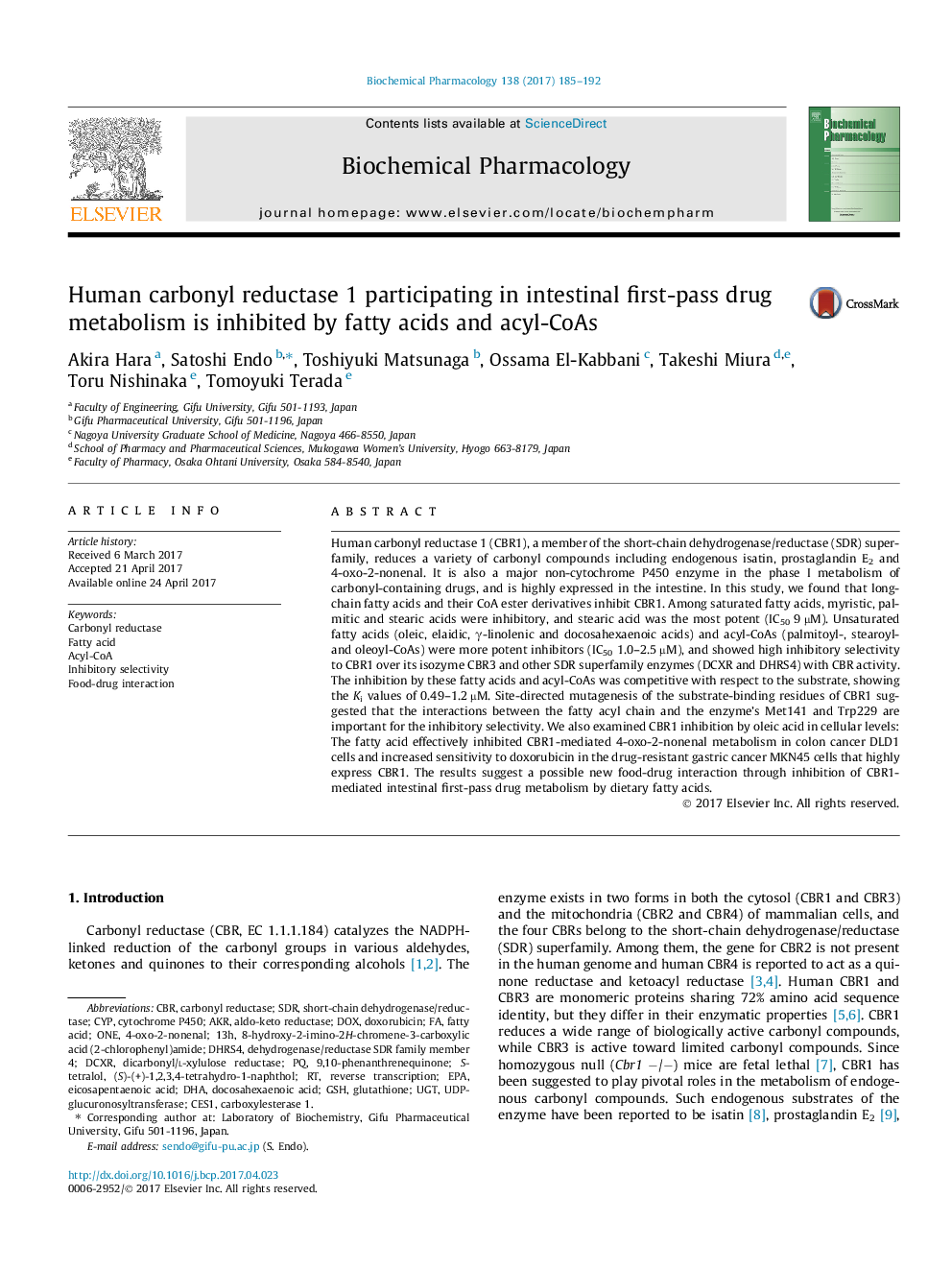| Article ID | Journal | Published Year | Pages | File Type |
|---|---|---|---|---|
| 5552036 | Biochemical Pharmacology | 2017 | 8 Pages |
Human carbonyl reductase 1 (CBR1), a member of the short-chain dehydrogenase/reductase (SDR) superfamily, reduces a variety of carbonyl compounds including endogenous isatin, prostaglandin E2 and 4-oxo-2-nonenal. It is also a major non-cytochrome P450 enzyme in the phase I metabolism of carbonyl-containing drugs, and is highly expressed in the intestine. In this study, we found that long-chain fatty acids and their CoA ester derivatives inhibit CBR1. Among saturated fatty acids, myristic, palmitic and stearic acids were inhibitory, and stearic acid was the most potent (IC50 9 µM). Unsaturated fatty acids (oleic, elaidic, γ-linolenic and docosahexaenoic acids) and acyl-CoAs (palmitoyl-, stearoyl- and oleoyl-CoAs) were more potent inhibitors (IC50 1.0-2.5 µM), and showed high inhibitory selectivity to CBR1 over its isozyme CBR3 and other SDR superfamily enzymes (DCXR and DHRS4) with CBR activity. The inhibition by these fatty acids and acyl-CoAs was competitive with respect to the substrate, showing the Ki values of 0.49-1.2 µM. Site-directed mutagenesis of the substrate-binding residues of CBR1 suggested that the interactions between the fatty acyl chain and the enzyme's Met141 and Trp229 are important for the inhibitory selectivity. We also examined CBR1 inhibition by oleic acid in cellular levels: The fatty acid effectively inhibited CBR1-mediated 4-oxo-2-nonenal metabolism in colon cancer DLD1 cells and increased sensitivity to doxorubicin in the drug-resistant gastric cancer MKN45 cells that highly express CBR1. The results suggest a possible new food-drug interaction through inhibition of CBR1-mediated intestinal first-pass drug metabolism by dietary fatty acids.
Graphical abstractDownload high-res image (80KB)Download full-size image
